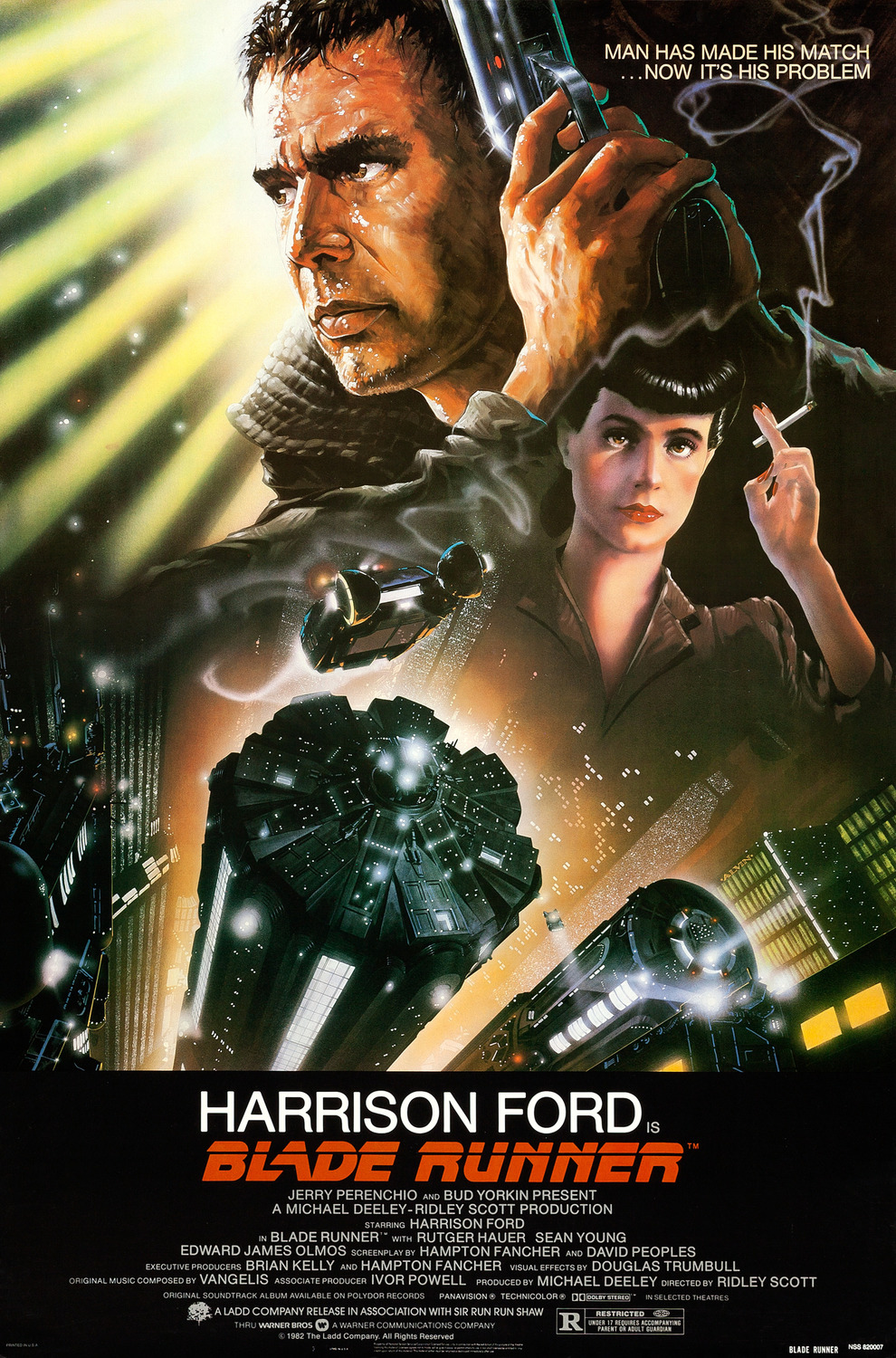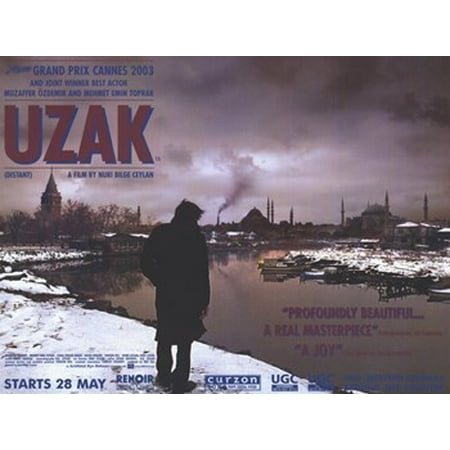The lighting in this photo could arguably be either high-key or low-key but since the whole of the woman's face is visible, this suggests that it uses high-key lighting. I think position of the lighting used is a combination of top and back lighting as it appears to be coming from the side, perhaps a window and this is in order to emphasise both her face and the smoke. The fact that the smoke has been deliberately exposed by the lighting creates a mysterious feel to the image, indicating that the woman could be concealing something that the audience isn't meant to see, suggesting that this film's genre could definitely be Film Noir.
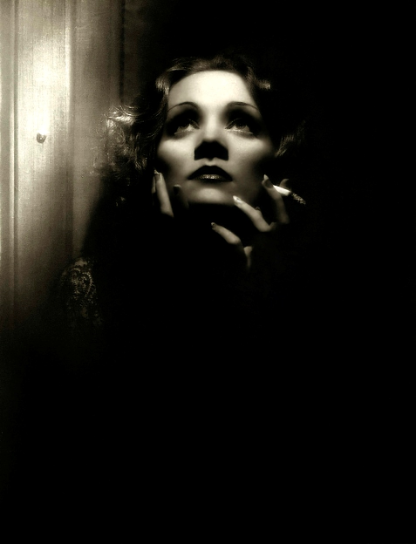
The lighting in this photo is undoubtedly low-key lighting since the only thing we can see in it is the woman's face. The director's intentions behind creating this darkly lit image could have been in order to emphasise the mysterious narrative that the film appears to have. The lighting that exposes her face is clearly top lighting and the fact that only her face is lit tells us that that is the part that requires the audience's attention; it's the most important part of the scene. The lack of lighting in this scene creates a feeling of being trapped, as the woman in this photo also seems to be and so it enables the audience to be as involved and engrossed in the film as possible, empathising with the woman.

The lighting in this photo is definitely high-key lighting because every aspect of the photo is well lit, except a small number of places under the man's chin and eyes, which emphasises the rest of his face more, making him look dominant, important and powerful. The lighting appears to be coming from all angles which reinforces the idea of him being a powerful and important character, drawing the audience's attention directly to him. Referring back to the shadows around his eyes, as well as making us think he is important, they also create a sense of darkness in this well-lit photo, causing us as the audience to wonder whether he is perhaps dangerous as well as powerful.

The lighting in this photo could be both low-key lighting and high-key lighting based on the fact that not everything in it is clearly lit but there are some areas that are very well-lit. I think lighting that has been used is top lighting that accentuates only the top half of his body and possibly a filler light from the left side of the character which lights his face very clearly. This back lighting has been used to create some sort of silhouette of the character which makes him look mysterious and almost scary. The fact that they have only lit one side of his face reinforces the idea of him looking scary and threatening - the gun he's holding also appears to have a 'glow' to it in a very dark part of the image, drawing our attention to it and this makes the audience aware that he is probably unafraid of violence, subsequently making us even more wary of him.
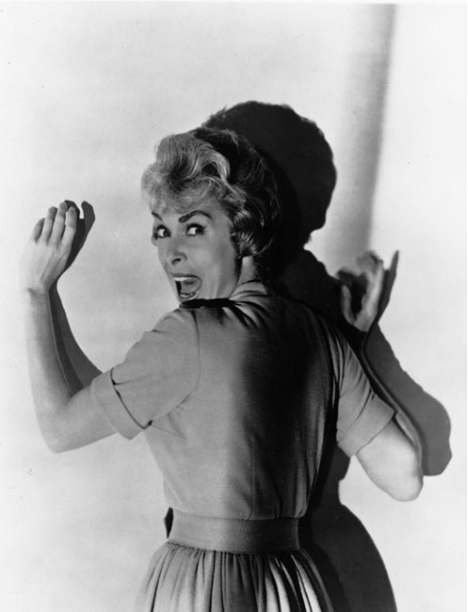
The lighting in this photo is interesting because every part of the woman in it is brightly lit, but there are still shadows of her on the wall. However, I personally think that this is high-key lighting because there aren't any parts of her body that have been obscured due to the lighting. The lighting used here appears to come from all angles, completely exposing her, which perhaps links with the film's narrative. However, as well-lit as it is, the use of shadows could be emphasising the mystery and the elements of Film Noir that this film could include, enabling us to make deductions as to the genre and the narrative.
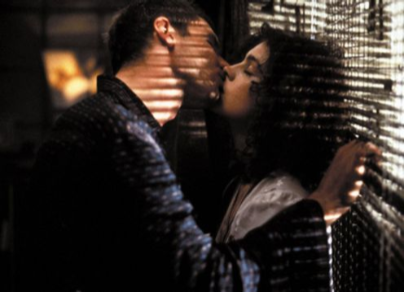
This photo's lighting is difficult to define because there are elements of both high-key and low-key lighting in it. I think however that it is mainly high-key lighting because although there are shadows suggesting low-key lighting, everything important in the photo is well-lit and the light is coming from most angles, ensuring both characters are lit so the audience can see the action clearly, from which we can then assume that this could a romantic film with elements of mystery signified by the use of shadows.
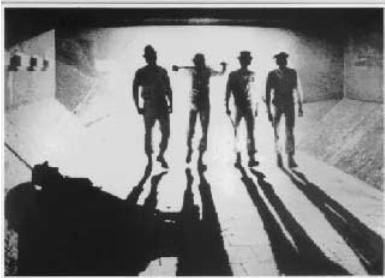
The lighting in this photo from 'A Clockwork Orange' is definitely low-key lighting to create a mysteriously sinister feel. Back-lighting has been used to create a silhouette and long shadows of the 4 main characters in order to conceal their appearances/identities from the audience, creating an extreme sense of mystery and uncertainty making the audience feel wary of them and perhaps threatened by them. We can also see the silhouette of a person lying on the floor in front of them which leads the audience to wonder why he's there and what they're going to do when they reach him.

This photo has elements of both low-key lighting and high-key lighting but I think overall it is low-key because of the amount of shadow in it. This shadow creates a strong sense of mystery, especially since half her face is lit and half is in shadow and along with the expression on her face and her body language, the audience might also be able to sense a lot of fear in it which can then lead us to assume that the genre could easily be horror or thriller. There's de
The lighting in this photo is high-key lighting because everything in the photo is completely lit, even though the woman's neck is in shadow, it's still visible. The lighting used is top lighting which has been used to accentuate her facial features and this makes her look slightly exposed and maybe even a bit vulnerable. The small use of shadows on her neck and her hand could maybe imply a sense of mystery or secrecy in the narrative.

The lighting in this photo is definitely low-key lighting because you can hardly see anything in it and the only place any light is visible is behind the door the person at the top of the stairs has come through and so he has been lit up by the back light behind him, creating a silhouette. This immediately makes us fear him and wonder how the narrative is going to develop with this character. The lack of lighting is a typical indicator of horror films, and this scary looking figure adds to that even more so we can definitely assume that this is from a horror film.

The lighting in this photo, despite the shadows is high-key lighting and the key light is being shone right at the two characters. I think top lighting has been used in order to draw the audience's attention to the two characters and to create realism. However, since the top light accentuates the man's facial expression, we can see he is not smiling like the woman appears to be and we can also see his shadow on the wall created by a filler light and I think this is to symbolise that this particular character isn't as nice and romantic as his wife/lover thinks he is and that he has a nasty, dark side to him and this could be a subtle hint at what might happen later in the narrative.
